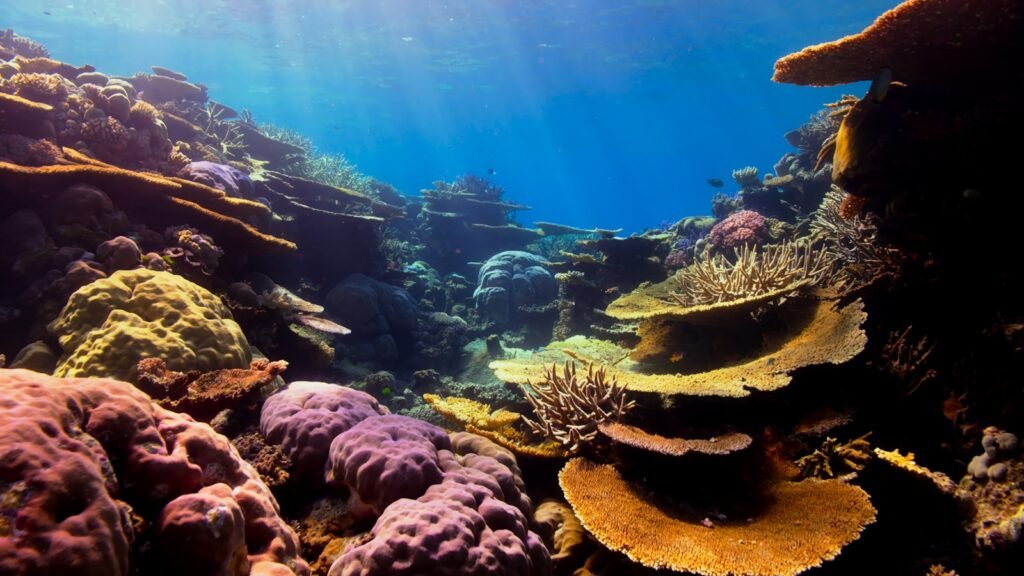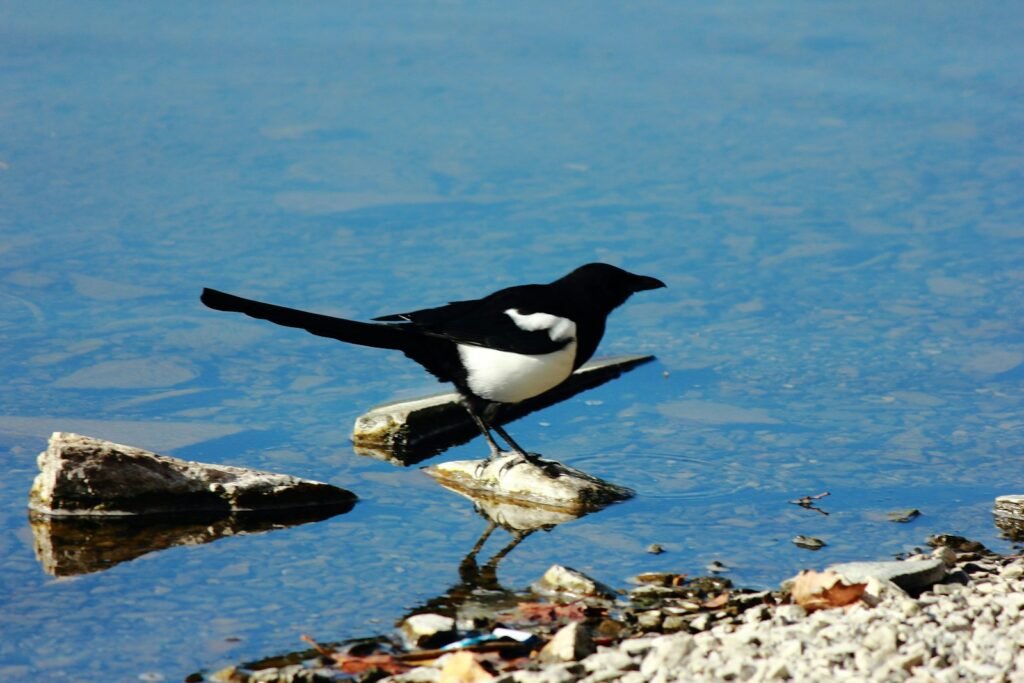The “rainforests of the sea,” coral reefs are under crisis. Rising ocean temperatures, pollution, and acidification have driven these rich ecosystems to the brink; half of the coral cover lost since the 1950s. Conventional monitoring depends on visual polls, tracking fish numbers and coral bleaching. What if, however, the true narrative of reef health is found in something invisible to the unaided eye rather than what we can observe?
One innovative method is under development: examining the microorganisms in seawater near reefs. Reacting quickly to environmental changes, these microscopic creatures function as early-warning systems for pollution, nutrient changes, and even climate stress. With faster, less expensive, more exact diagnostics than conventional techniques, scientists today contend that microbial monitoring could transform reef preservation.
The Hidden Sentinels: Why Microbes Matter
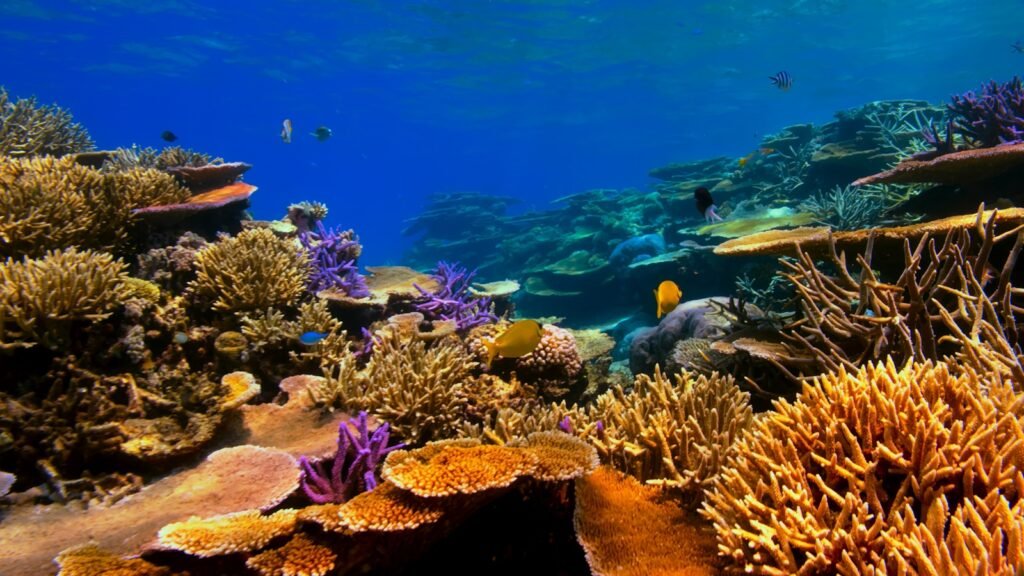
The invisible builders of reef ecosystems are microbes. Through bacteria like Prochlorococcus, a major genus that disappears when pollution strikes, they control nutrient cycles, support coral immunity, and even generate oxygen. Unlike corals, which might exhibit stress over several weeks, microbial populations move within hours of environmental changes.
Microbial monitoring can identify issues long before coral bleaching or fish extinction, according a 2025 research in Cell Reports Sustainability. One red flag that later connected to suspected industrial dumping was a 30% decline in photosynthetic bacteria shown by a reef in the U.S. Virgin Islands.
Key Fact: Far more than host-associated bacteria in coral or sponges, seawater bacteria explain up to 56% of environmental changes on reefs.
Beyond the Naked Eye: How Microbial Monitoring Works
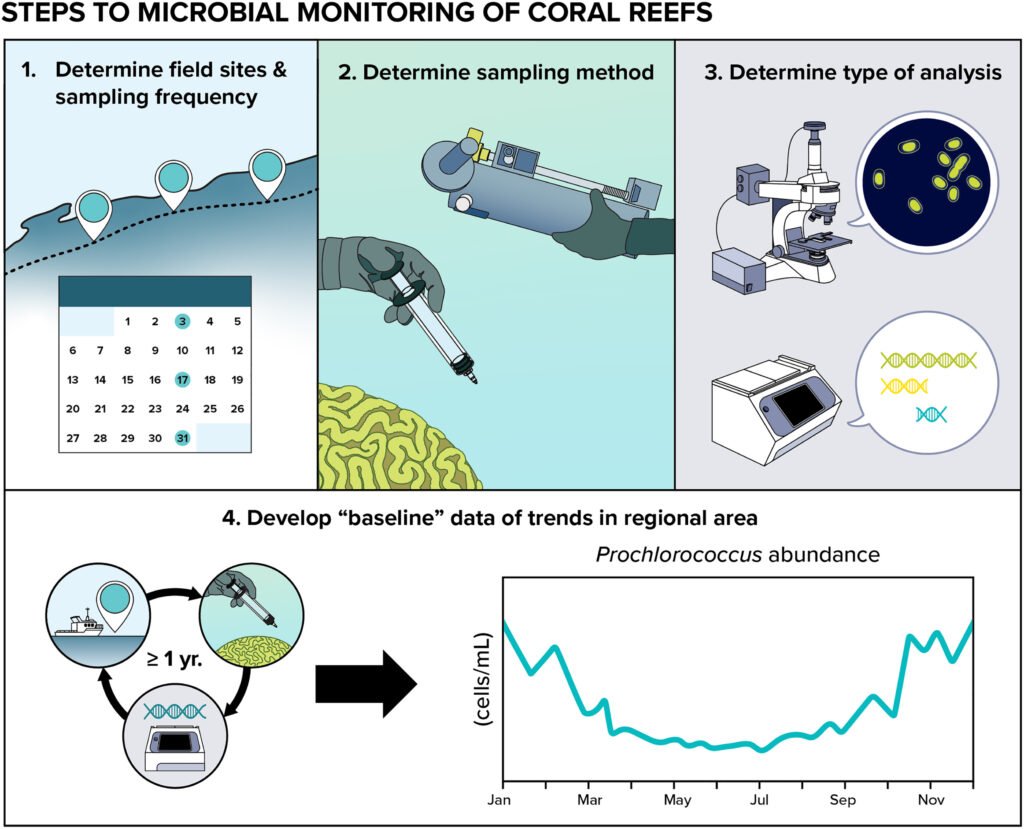
Conventional reef surveys mostly target macroorganisms, coral, fish, algae. But microbial monitoring probes more deeply:
- Using basic syringes or bottles, seawater is gathered just half a meter (1.6 feet) above the reef.
- Analysis spans low-cost microscopy ($7/sample) to sophisticated DNA sequencing ($55–$99/sample).
- Important Signals:
- Healthy reefs have more energy-producing microorganisms than heterotrophic bacteria.
- E. coli alerts sewage contamination.
Citizen scientists can help out unexpectedly. NGOs in Southeast Asia track pollution close to coastal towns using reasonably priced field microscopes.
The Microbial “Report Card”: A New Health Index
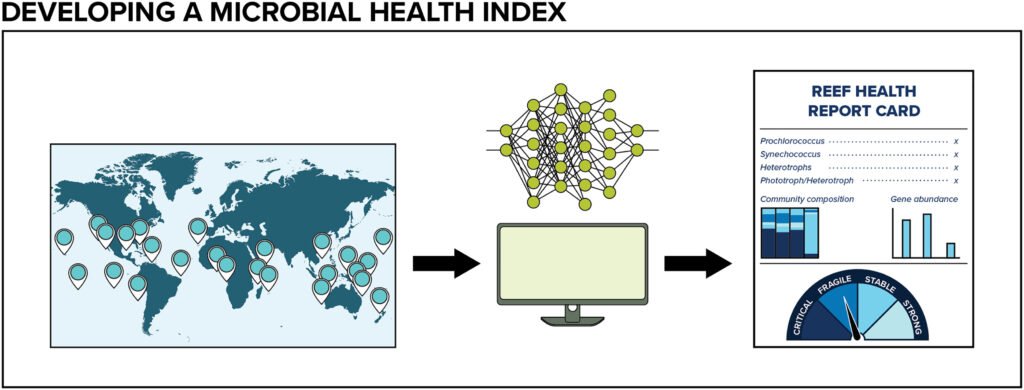
A standardized “report card,” researchers suggest a Reef Water Microbial Health Index evaluating:
- Diversity in Microbes
- Nutrient levels
- Pollution indicators
This could direct efforts at restoration. Reefs with balanced microbiomes, for example, might be ideal candidates for coral outplanting.
Case Study: Microbial changes expected bleaching months before visual assessments on the Great Barrier Reef.
The Cost of Inaction: Reefs in Crisis
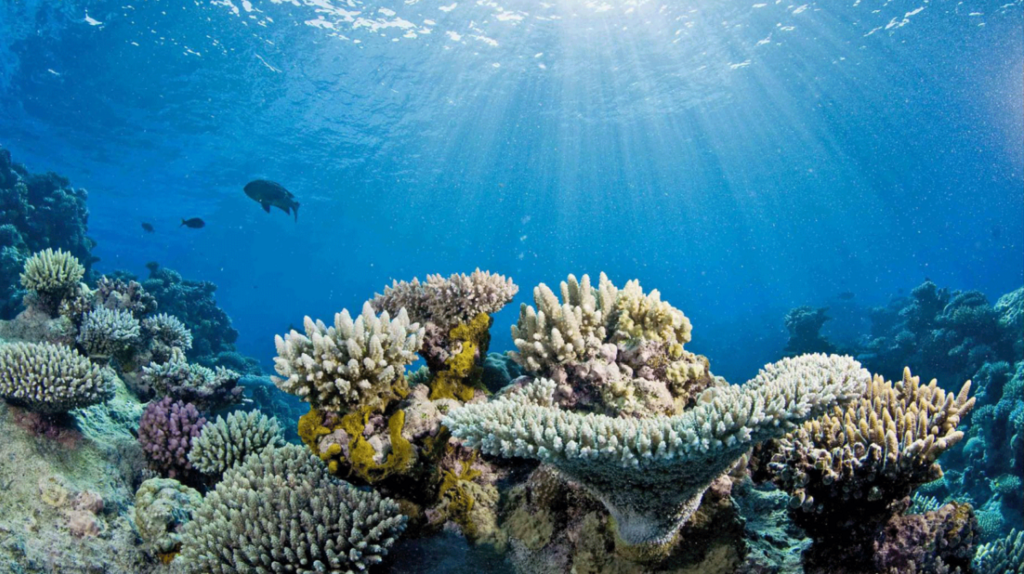
Though they are disappearing, coral reefs provide $375 billion yearly in ecological services. The worst on record, the 2014–2016 global bleaching event killed thirty percent of the coral on the Great Barrier Reef.
Microbial tracking might offer early intervention. In particular:
- Detects nutrient runoff before algae overgrowth smothers coral in aquaculture pollution.
- Climate Stress: Issues pre-mass bleaching temperature spikes
Shockingly, without significant intervention, 90% of reefs could disappear by 2100.
Challenges: Funding and Global Standards
Microbial monitoring presents challenges even with its promise:
- Lack of funds: Many environmental organizations depend on gifts.
- No universal protocol; different approaches complicate data comparison.
Researchers call for open-access databases and machine learning to forecast reef health from worldwide microbial trends.
The Future: A Microbial Revolution in Conservation
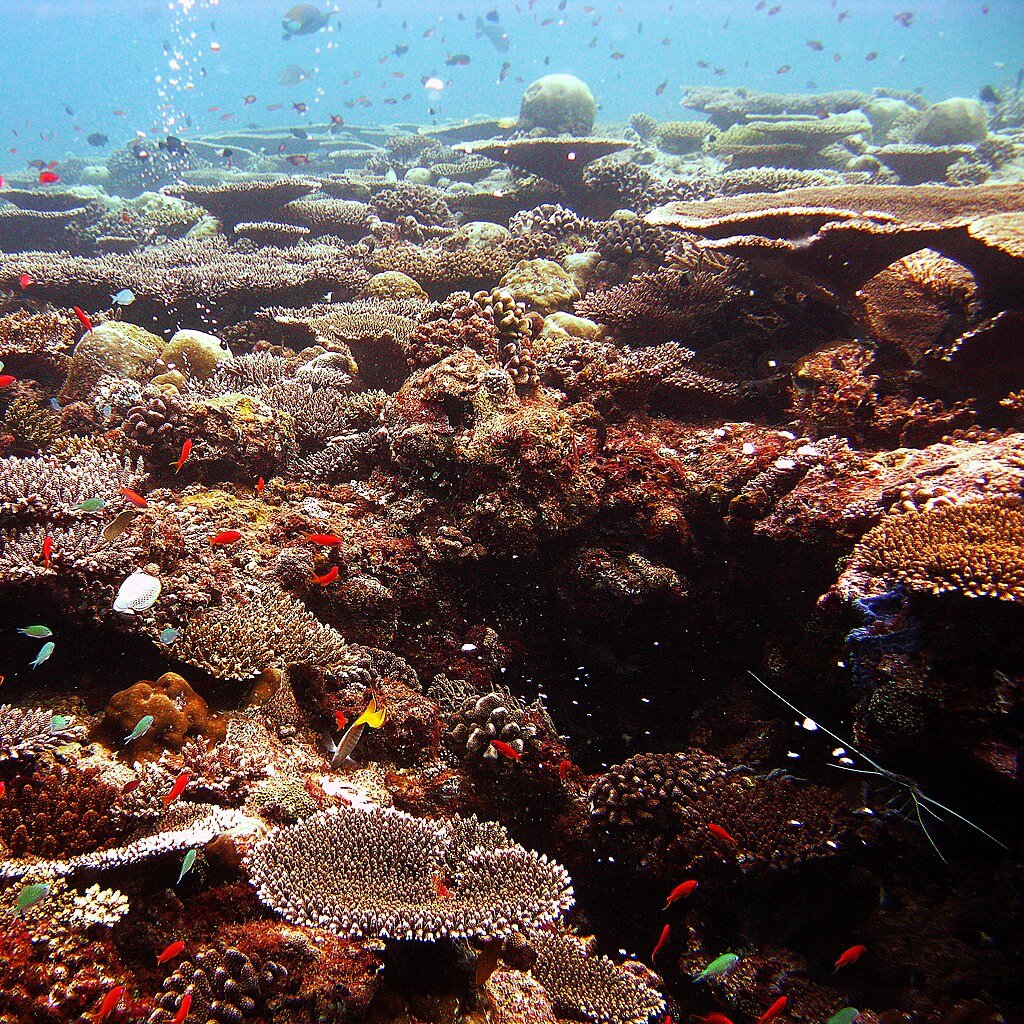
Could bacteria help to preserve coral reefs? Though time is running short, scientists say yes.
The next actions are:
- Boost low-cost instruments for developing countries.
- Combine satellite monitoring with microbiological data.
As lead researcher Amy Apprill notes: “We need every tool we can get. Microbes are like the immune system of the reef; we simply have to learn to interpret their signals.”
Conclusion
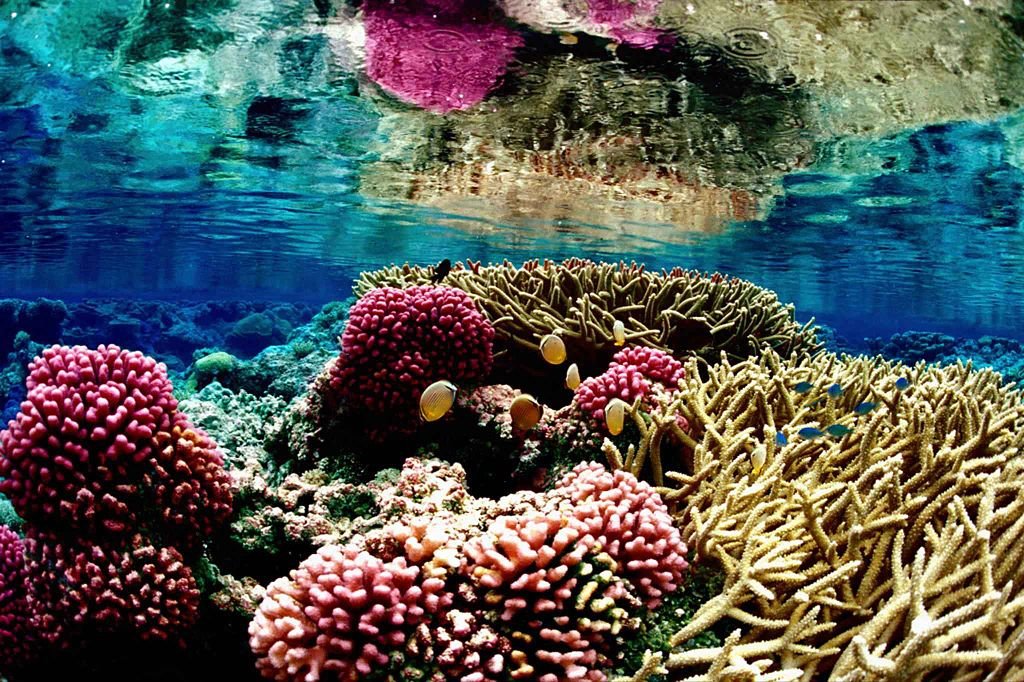
Our capacity to pay attention to the smallest occupants of coral reefs could determine their future. Microbial monitoring is a lifeline for ecosystems on the brink, not only a scientific advance. We might perhaps give reefs a fighting chance by deciphering the whispers of bacteria.
Would you be willing to help? Support reef preservation organizations advocating microbial monitoring since occasionally the smallest creatures have the most important stories.
Sources:

Jan loves Wildlife and Animals and is one of the founders of Animals Around The Globe. He holds an MSc in Finance & Economics and is a passionate PADI Open Water Diver. His favorite animals are Mountain Gorillas, Tigers, and Great White Sharks. He lived in South Africa, Germany, the USA, Ireland, Italy, China, and Australia. Before AATG, Jan worked for Google, Axel Springer, BMW and others.

